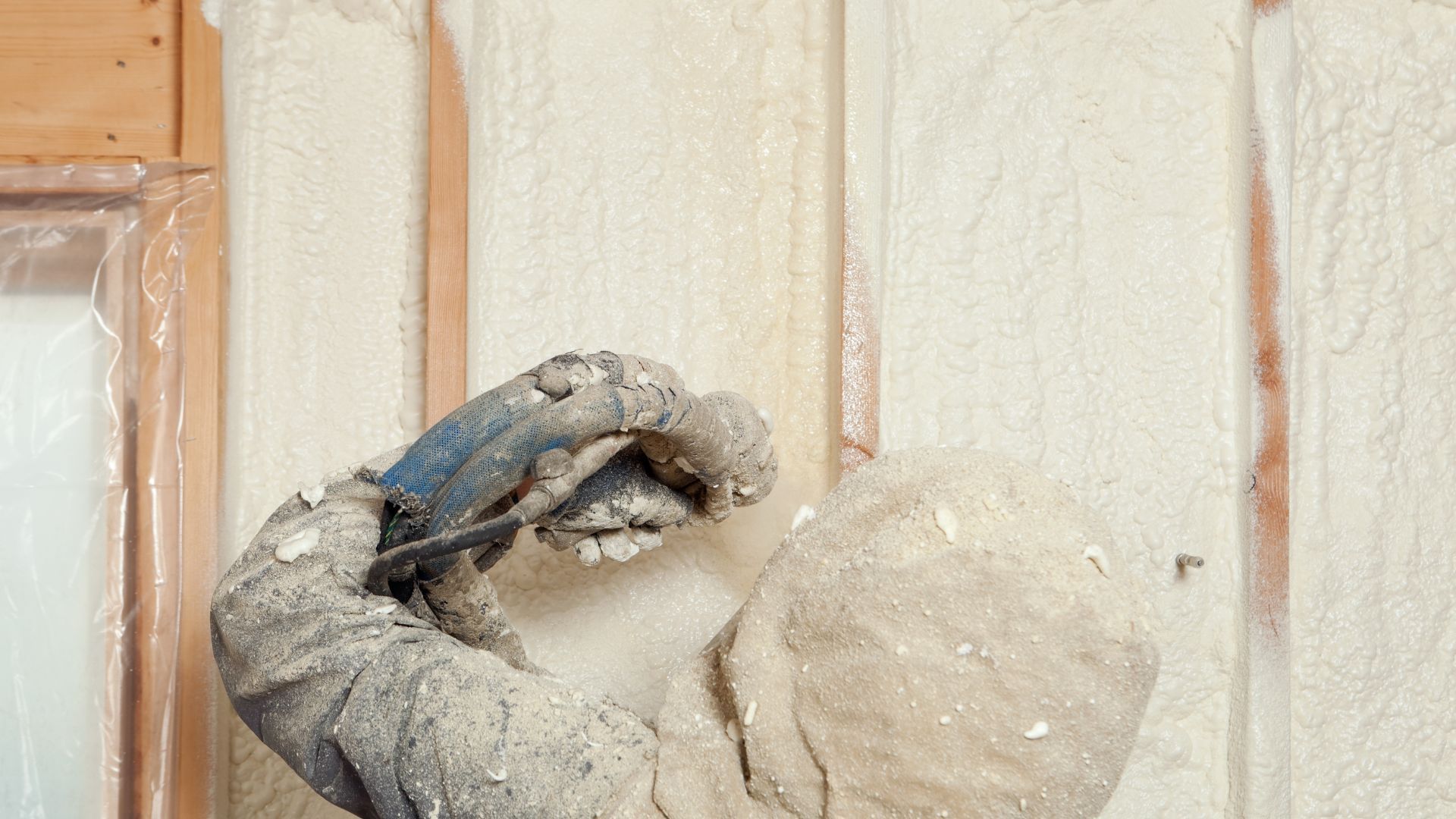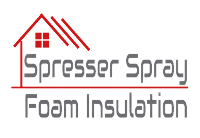Spray Foam Insulation for Metal Buildings in Missouri
Oct 22, 2023
Benefits and Applications of Spray Foam Insulation in Missouri

Metal buildings are renowned for their durability, versatility, and cost-effectiveness. From commercial warehouses to agricultural structures, these buildings serve diverse purposes. However, ensuring these structures are comfortable, energy-efficient, and well-protected from the elements can be a challenge due to their unique properties. This is where spray foam insulation steps in as a transformative solution.
From understanding the science behind spray foam to real-world case studies and environmental considerations, we will delve deep into why this insulation method is gaining widespread recognition in the world of construction.
The Popularity of Metal Structures
Metal buildings have gained popularity for their affordability, quick construction, and versatility. They are used in industries ranging from agriculture and warehousing to aviation and residential construction.
The popularity of metal structures has surged in recent years, and for good reasons. These versatile and durable constructions are favored in various industries for their cost-effectiveness, quick assembly, and adaptability. From industrial warehouses and agricultural buildings to aircraft hangars and residential homes, metal structures offer an efficient and reliable solution. However, their rising popularity also comes with unique challenges, especially in terms of insulation and temperature control, making the role of insulation methods like spray foam crucial in optimizing the functionality and comfort of these buildings.
Challenges in Metal Building Insulation
While metal buildings offer many advantages, they also pose unique challenges when it comes to insulation. Their metal framework can conduct heat and cold, leading to temperature fluctuations, condensation, and increased energy consumption.
Insulating metal buildings presents distinct challenges due to the unique characteristics of these structures. While they offer numerous advantages, such as durability and cost-effectiveness, their metal framework can also lead to specific insulation issues:
1. Temperature Extremes: Metal buildings are prone to rapid temperature fluctuations. Metal is an excellent conductor of heat, which means that without proper insulation, these structures can become uncomfortably hot in summer and bitterly cold in winter. Maintaining a consistent indoor temperature is a challenge.
2. Condensation: Metal buildings are susceptible to condensation issues. Temperature differentials between the interior and exterior surfaces of the metal can cause moisture to accumulate, potentially leading to corrosion, mold growth, and structural damage.
3. Energy Inefficiency: Without adequate insulation, metal buildings can be highly energy-inefficient. The lack of insulation allows conditioned air to escape and outdoor air to infiltrate, leading to higher energy consumption and operating costs.
4. Noise Transmission: Metal structures can be noisy, with sounds from rain, wind, and other external sources easily penetrating the metal panels. Proper insulation is essential to create a quieter, more comfortable interior environment.
Addressing these challenges requires a specialized approach, and spray foam insulation has emerged as a powerful solution to transform metal buildings into energy-efficient, comfortable, and sustainable spaces. Its unique properties, including thermal resistance, air sealing capabilities, and soundproofing qualities, make it an ideal choice for insulating metal structures and overcoming these inherent challenges.
Understanding Spray Foam Insulation
The Science of Spray Foam Insulation
Explore the scientific principles behind spray foam insulation, including its expansion properties and how it creates an effective thermal barrier. The science of spray foam insulation revolves around a remarkable transformation from liquid to solid, which results in an airtight and highly efficient thermal barrier. Understanding this process is essential for appreciating the effectiveness of spray foam insulation:
1. Two-Component Chemical Reaction: Spray foam insulation is typically a two-component system, comprising an isocyanate and a polyol resin. When these two components are mixed and sprayed, they undergo a chemical reaction.
2. Expansion and Filling: During the application, the mixed liquid components expand significantly in volume. This expansion is what makes spray foam so effective at filling gaps, cracks, and voids in building structures, ensuring a continuous and seamless layer.
3. Cellular Structure: As the liquid foam expands, it forms a cellular structure, creating a network of tiny, interconnected bubbles. This structure is what provides the insulation's remarkable thermal resistance, preventing the transfer of heat and cold.
4. Airtight Seal: One of the standout features of spray foam is its ability to create an airtight seal. The expanding foam fills and seals all gaps, preventing the infiltration of external air and the exfiltration of conditioned indoor air.
5. Curing and Solidification: After application, the foam cures and solidifies relatively quickly, becoming a solid, rigid material. This phase is essential for creating a durable and long-lasting insulation barrier.
The science of spray foam insulation hinges on the precision of this chemical reaction, creating a thermal barrier that is not only highly effective at maintaining indoor temperatures but also invaluable for controlling moisture, preventing air leaks, and reducing energy consumption. The cellular structure, airtight seal, and insulating properties make spray foam a preferred choice for a wide range of construction applications, from residential homes to commercial and industrial buildings.
Types of Spray Foam Insulation
Understand the differences between open-cell and closed-cell spray foam insulation and their suitability for various applications.
Spray foam insulation presents a multitude of benefits when used in metal buildings, making it a versatile and efficient solution for optimizing their performance and functionality. Here's a closer look at these advantages:
1. Superior Thermal Insulation: Spray foam insulation offers remarkable thermal resistance, preventing heat transfer through the metal surfaces of the building. This ensures that the interior remains consistently comfortable, even in the face of extreme outdoor temperatures.
2. Air Sealing and Moisture Control: The airtight seal created by spray foam insulation prevents air infiltration and exfiltration, significantly reducing energy wastage and preventing moisture buildup. This is particularly crucial in metal buildings, where condensation can be a problem.
3. Structural Support: Spray foam insulation can provide structural support, enhancing the stability and durability of the building. It offers a seamless layer that reinforces the structure and protects it from external forces.
4. Soundproofing Properties: Metal buildings can be noisy due to rain, wind, and other external factors. Spray foam insulation's cellular structure also acts as an effective soundproofing barrier, creating a quieter and more comfortable interior environment.
5. Energy Efficiency: By minimizing temperature fluctuations and reducing the workload on heating and cooling systems, spray foam insulation significantly lowers energy consumption.
This leads to substantial savings on energy bills and a reduced environmental footprint.
In metal buildings, where temperature control, energy efficiency, and structural integrity are critical, spray foam insulation emerges as a game-changing solution. It provides exceptional insulation properties, air sealing, moisture control, structural support, and soundproofing—all contributing to a more comfortable, efficient, and sustainable building. Its versatility makes it a valuable asset for a wide range of applications, from commercial and industrial facilities to agricultural and residential metal structures.
The Benefits of Spray Foam Insulation for Metal Buildings
The Application Process
Pre-Application Preparation
Learn about the steps involved in preparing a metal building for spray foam insulation, including surface cleaning and inspection.
Spray Foam Application Techniques
Explore the methods used to apply spray foam insulation, including on-site mixing and spraying, and understand the importance of professional installation.
Post-Application Inspection
Understand the necessity of post-application inspections to ensure the insulation's integrity and effectiveness.
Energy Efficiency and Cost Savings
The Impact on Energy Bills
Calculate the energy savings and reduced operational costs that result from spray foam insulation in metal buildings.
Return on Investment (ROI)
Understand the financial benefits of spray foam insulation, including the potential for a substantial return on investment.
Environmental Considerations
Reducing Carbon Footprints
Explore how spray foam insulation reduces carbon emissions, aligning with environmental goals and sustainable living.
Sustainable Building Practices
Discuss the overall sustainability of metal buildings with spray foam insulation, considering their energy efficiency and long-term impact.
Recyclability and Waste Reduction
Learn about the recyclability of spray foam insulation and how it contributes to reducing waste in construction.
Future Innovations and Trends
Emerging Technologies
Discover the latest advancements in spray foam insulation technology and their potential impact on metal building insulation.
Government Incentives and Regulations
Explore government incentives and regulations that promote energy-efficient building practices and the use of spray foam insulation.
Summarize the key takeaways from this comprehensive guide and highlight the transformative potential of spray foam insulation in metal buildings. Discuss its role in enhancing energy efficiency, reducing operational costs, and contributing to a sustainable and eco-conscious future in construction.
This extensive guide offers a comprehensive exploration of the benefits and applications of spray foam insulation in metal buildings. Whether you're a property owner, builder, or someone passionate about sustainable construction, this resource will equip you with valuable insights and knowledge about harnessing the power of spray foam insulation to transform metal structures into energy-efficient, comfortable.
SPEAK TO A TEAM MEMBER TODAY

© 2024
All Rights Reserved | Spresser Spray Foam Insulation
Website Managed by
Leads By Vinny